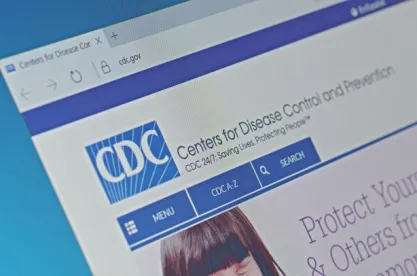On December 2, 2020, the U.S. Centers for Disease Control and Prevention (CDC) announced that it is revising its COVID-19 quarantine guidelines, offering an alternative to the prior blanket 14-day quarantine recommendation for individuals coming into close contact with positive or presumed-positive individuals.
While the CDC emphasizes that the original 14-day quarantine period is best after a close contact, the revised guidelines now allow for the following “acceptable alternative[]” quarantine periods, during which the individual remains symptom-free:
- after day 10 following close contact;
- after day 7 following close contact, with a negative test taken within 48 hours of the final day of quarantine (i.e., at least 5 days following close contact).
For both the 10-day and 7-day alternatives, the CDC indicates daily symptom monitoring and mitigation strategies (including correct and consistent mask use, social distancing, hand and cough hygiene, environmental cleaning and disinfection, avoidance of crowds, and adequate indoor ventilation) should continue through day 14 following close contact. The CDC also indicates the 7-day alternative should be available only when the use of tests to discontinue a quarantine will not have an impact on community diagnostic testing; the CDC emphasizes that testing for infection-evaluation should be the priority.
According to the CDC, if an individual develops symptoms during either the 14-day, 10-day, or 7-day quarantine period, he or she should be treated as a positive/presumed-positive, isolate, and be subject to the associated guidelines. Generally, symptomatic individuals are able to return to work (i.e., discontinue home isolation) only after the following has occurred: (a) 10 days have passed since the onset of symptoms; (b) COVID-19 symptoms have ceased (except for the loss of taste or smell, which may last for some time and should not preclude the end of isolation/return to work) and (c) the individual is fever free for at least 24 hours without the use of fever-reducing medication. Isolation periods may be longer for individuals who are severely immunocompromised or as determined by medical providers.
In light of the revised CDC guidance, employers may wish to reassess their close contact quarantine policies, including whether to continue requiring employees to remain home for 14 days after close contact or to revise policies to reflect either or both the 10-day and 7-day quarantine periods following close contact. Given the CDC’s continued emphasis that a 14-day quarantine period is best, employers may decide to leave that quarantine time period in place. Other employers needing or desiring more operational and staffing flexibility may opt to use the 10-day or 7-day quarantine periods, taking into account the availability of testing for end-of-quarantine purposes in their communities.




 />i
/>i

